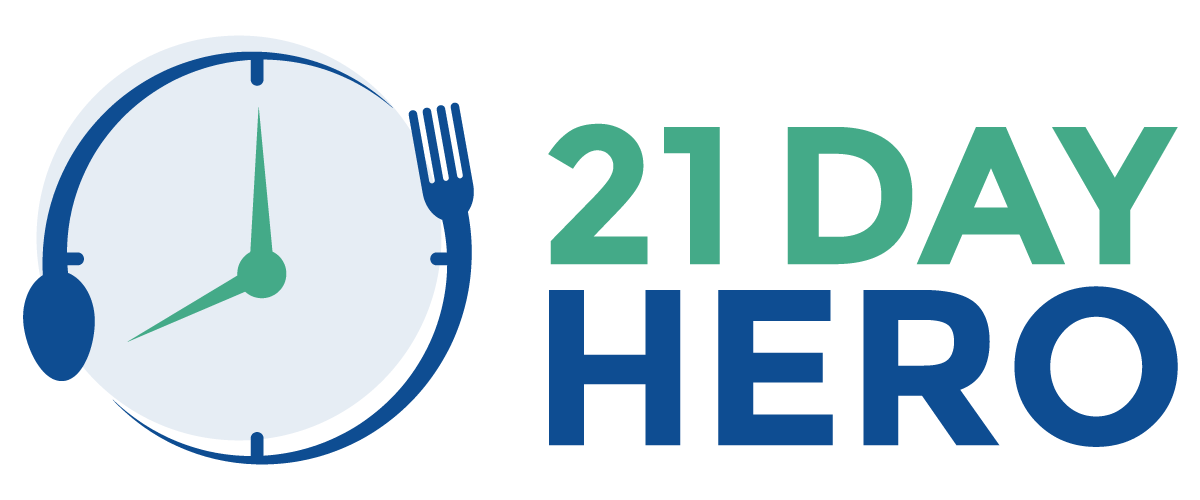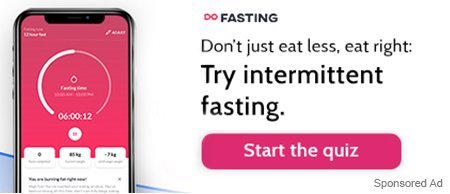What is the 48 Hour Fast | How to Practice the 48 Hours Fast Safely? | How to break the 48 hours Fast | Benefits of the 48 Hour Fast | Side Effects of the 48 Hour Fast
You must have heard about intermittent fasting from various online sources and fitness influencers by now. This new form of dieting has taken the fitness world by the storm. Several people claim its various health benefits apart from weight loss. Let’s learn more about the 48 Hour Fast!
Intermittent fasting has been further molded into different fasting regimens that involve fasting for a few hours and having food only during eating windows. The most common intermittent fasting schedules consists of 16/8, 14/10 intermittent fasting, OMAD, etc. Here is a list to the 10 types of intermittent fasting.
What is the 48 Hour Fast?
Compared to other intermittent fasting patterns, the 48 hour type of fasting is the most prolonged form of intermittent fasting. During the 48 hours fast, a person needs to stop eating for two days while drinking only fluids to replenish their electrolytes. If you think it sounds a bit extreme, you are not alone. The 48 hours fast can be difficult for several people and involves careful monitoring.
The 48 hour fast is a type of intermittent fasting during which you need to pause eating any food for at least 48 hours. You can only drink calorie-free drinks throughout the day that will help you replenish your electrolytes and energy levels.
To understand the 48 hours fast, you need to understand the logic behind the concept of intermittent fasting. This fasting diet trend involves rotating between eating periods and fasting periods that provide your digestive system with some windows of rest.
This article will break down the 48 hours fast and answer your queries regarding this new diet trend. We will shed light on whether the 48 hour fast is safe and what you need to know before jumping on this diet train.
Let’s get started.

During the fasting period, your body generates energy from stored forms of fuel. Intermittent fasting is based on the benefits of ketosis, a process where your body starts using your fat stores as you run out of glucose.
The idea of fasting has been around for several years and is safely practiced by several people for religious purposes. According to studies, following a diet pattern with fasting and eating windows can increase weight loss and other health benefits.
The 48 hour fasting is pretty strict and can not be performed by everyone. Many people opt to practice this fast once a week. In recent years, the 48 hour fasting method has gained quite a bit of popularity

How to Practice the 48 Hours Fast Safely? Is a 48 Hour Fast Safe in general?
If this is your first time trying a 48 hour fast, be sure to do your homework to plan the next 2 days, and make sure this period of time is something your body can do safely, with the help of a doctor. Also be sure you are a healthy weight before starting this type of fat burning fasting plan. Theoretically, the 48 hour fast sounds pretty straightforward, which means you go two days without eating any food. Commonly, people stop eating after dinner and restart eating after 48 hours at dinner time.
Simple right?
But the 48 hours fast might not be safe for everyone, and you need to brief yourself with the ins and outs of the diet before deciding to practice it. The 48 hours fast can be followed by drinking calorie-free drinks such as black coffee, herbal tea, and water.
Drinking fluids is a crucial part of the 48-hour fast that prevents dehydration, a critical complication of fasting for long hours.
You also want to add electrolytes and minerals if possible, taking a mineral supplement along with drinking water will help provide the proper balance of your salt/potassium/magnesium and other mineral levels. I personally take this Mineral supplement, provides an excellent balance of all of your needs – Trace Mineral Tablets.
Example of 48 hour fast schedule
Here is an example of how a two-day fast works. To start, you can stop eating on a Tuesday evening and later begin eating on the evening of Thursday. This method will provide your body with time to digest your last meal on Tuesday, and by the time you wake up on Wednesday morning, you will have successfully completed 8-10 hours of fasting.
You can drink zero-calorie fluids like green tea and water for the next two days. Adding some salt or electrolyte tablets to your water will help you replenish the electrolytes in your system. It is also important to drink when you are thirsty. Overdrinking fluids can make it difficult for your body to keep its electrolyte levels in check.
After completing your fast on Thursday, break your two-day fast by eating light meals and continue with your regular diet from Friday onwards. The 48 hours fast can be tricky at the start, and it is advisable for beginners to start with shorter versions of intermittent fasting, such as the 12/12 or 16/8 method, before going for the more extended versions of fasting.
Many people will use the 48-hours as a water fasting period, with 100% calorie restriction during that time.
Shorter fasts will help your body accommodate fasting and help you learn how your body responds to fasting in general. Several people try the 48 hours fast once a week since it provides your body with a longer fasting window.
While practicing the 48 hours fast, remember to listen to your body. Feeling exhausted or dizzy may indicate that the fast is becoming too much for your body.
How to break the 48 hours Fast?
After dieting for straight two days, you might want to start binge eating. However, after denying your body any real food for two days, overeating would end up overstimulating your gut. This can lead to nausea, diarrhea, and bloating.
To prevent that, you should slowly reintroduce small portions of food and give your body some time to adjust back to its normal physiology. Easing back into eating is essential for breaking your two-day fast.
People on the 48 hour fast can break their fast by eating small and light snacks such as a handful of walnuts or almonds. Later, you can eat a small meal after an hour or two.
It’s crucial to eat regular and balanced food on the days that you are not fasting. Many people may give in to cravings and binge on high-calorie food on their non-fasting days. This would negate the effects of your fasting days and render the two-day fast practice less effective.
Learn more with this Intermittent fasting food list – what should I eat?

What Are The Benefits of the 48 Hour Fast? Is Fasting for 48 Hours Healthy?
The 48-hour fasting benefits are quite strong, and they are backed by science. Fasting allows your body to take a break from the energy-consuming process of digestion. It can help your body refocus its energies on other tasks such as repairing itself. According to reports, fasting can reduce hypertension, obesity, rheumatoid arthritis, and asthma.
Experts have claimed that regular intermittent fasting can offer several benefits, these 48 hour fast benefits are:
- Enhanced brain function
- Improved glucose levels
- Better digestion & recovery from some digestive issues
- Reduced blood pressure
- Improved insulin sensitivity, Insulin resistance benefits
- Reduced Risk of Heart Disease
- Autophagy and cell repair
- Reduced Risk of Chronic Diseases
- Reduced chronic inflammation
- Boosts immune system
- HGH increases (Human Growth Hormone)
- Slow down the aging process
- Reduces Oxidative Stress
Many of these benefits of fasting 48 hours come from losing weight during the two-day fast.
Autophagy is a process that involves the body cleansing itself by removing all the dead and damaged cells. It also allows your body to heal and regenerate itself. A report states that fasting and restricting your calorie intake are great ways to trigger the process of autophagy in your body, allowing your body to focus on self-healing. This has been shown in both human and animal studies.
Weight loss is one of the biggest reasons for the popularity of the 48 hour fast. Experts say that intermittent fasting produces the same results as when people with obesity restrict their calorie intake. The two-day fast can help people reach their weight loss goal if they practice it the right way. However, it is essential to follow a healthy lifestyle to maintain weight loss.
48 hour fasting weight loss can be quick! But, keep in mind, you MUST stay hydrated, electrolytes, minerals etc! You don’t want to counteract the benefits of fasting for 48 hours by not being responsible during the process! Be healthy, be smart, get fluids, check your blood pressure, and feel your body out.
You won’t want to go extreme if you feel light-headed or bad in any way. Hunger is normal, maybe a little feeling of weakness, but that should come and go. You may experience mental clarity during the fast, which is a nice benefit!
With the right strategy – you can lose weight, click here to find out – weight loss results.
Fasting for more extended periods allows your body to use its glycogen reserves, hence causing a reduction in the body’s insulin levels. Fasting for two days can boost insulin sensitivity and decrease blood sugar levels.

Side Effects of the 48 Hour Fast
The side effects of the two-day fast are the same as the side effects of any long-duration fast. That is why it is advised to try shorter fasts that can allow you to learn about your body’s natural response to fasting. These effects are NOT common in everyone, but be aware of your body, and take it easy throughout the process. Most common possible side effects 48 hour fasting are:
- Fatigue
- Irritability
- Hunger pangs
- Digestive issues
- Nausea
- Headaches
- Insomnia
- Fainting
- Sugar cravings
If you start feeling any issues which deserve medical attention, please see your doctor immediately. But given a healthy person, this is a fairly common practice to renew and rejuvenate the body.
To make sure you are getting enough nutrients, I highly recommend MegaFood Supplements, click the link here to see what they offer. They are easily digestible, and are natural so no synthetic vitamins/minerals, and can be taken on an empty stomach during a fast, and will NOT break your fast with most of their products.
Who Should Avoid Practicing 48 Hours Fast?
The two-day fast requires taking a pause from food for 48 hours. This can affect people differently depending on their overall health and any underlying medical condition. People with diabetes should consult their doctor before trying any kind of fast since it can drastically change their sugar levels and affect how their medications act.
Pregnant and breastfeeding women are not advised to try the two days fast. People with eating disorders should also avoid the two days fast. If you take medications such as nonsteroidal anti-inflammatory drugs, blood thinners, or blood pressure medications, consult your doctor before trying the 48 hours fast.
The Bottom Line

48 hour fasting is my PERSONAL favorite prolonged type. I have found that 72 hours is just too long, and 48 hours I was able to maintain my energy, clarity and motivation. YES, you will feel hungry, yes you will at first feel tired. But once you get over the hump, you will likely start to lift brain fog, and feel energized. But again, everyone is different!
The 48 hours fast can provide your body several benefits, including self-healing, weight loss, and boosting insulin sensitivity. Practicing longer fasts can be daunting for people who aren’t used to fasting for long hours. As always, its a good idea to consult with your doctor before beginning any type of intermittent fasting program, determine if there are any underlying medical conditions.
Once your 48 hour period is up, you may also go for longer periods such as 72 hours, however be sure to hydrate properly, drink plenty of fluids, and refill your electrolytes as needed. Whatever eating pattern you choose, or if its your first time, do you research and plan accordingly before deciding a period of time to fast.
Related Articles You May Like:
Want to go on a Fasting or Health retreat with likeminded others? Check out our Fasting Retreats review page Here.











